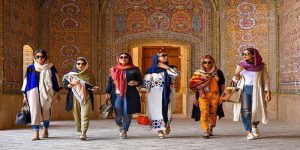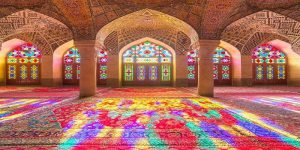A Guide to Dress Code in Iran
Iran, a nation steeped in history and cultural richness, welcomes travelers with open arms. However, for a smooth and respectful visit, understanding the dress code is essential. While Iran is not as strictly conservative as some may perceive, adhering to certain guidelines ensures a culturally sensitive experience.
Iran’s dress code stems from Islamic principles that emphasize modesty for both men and women. Respecting these cultural norms demonstrates your appreciation for local customs and avoids unwanted attention. The dress code is generally more relaxed for tourists, but it’s always best to err on the side of caution.

What to Wear for Women:
- Cover Up: Women should ensure their arms and legs are covered. opt for long-sleeved shirts, tunics, or loose-fitting dresses that fall below the knee.
- Headscarf Essentials: A headscarf is mandatory in public spaces. While enforcement might vary in certain areas, it’s best to carry a headscarf and wear it properly. Simple scarves or pashminas work well.
- Mind the Silhouette: Avoid tight-fitting clothing that accentuates the figure. Loose and comfortable clothing is ideal.
- Footwear Freedom: There are no restrictions on footwear for women. Feel free to wear sneakers, sandals, or comfortable shoes.
What to Wear for Men:
- Leg Length Matters: Men should wear long pants that cover the legs entirely. Shorts are not appropriate in public spaces.
- No Sleeveless Shirts: opt for shirts with sleeves. Tank tops or sleeveless shirts are not considered appropriate attire.
General Tips:
- Pack Layers: Temperatures in Iran can vary depending on the season and location. Packing layers allows you to adjust to different climates.
- Bring a Scarf: Even if you don’t plan on wearing a headscarf all the time, having one readily available ensures you’re prepared for situations where it might be necessary.
- Embrace Modesty: Think “conservative casual” when packing your outfits. Opt for comfortable clothing that adheres to the general guidelines.
- Respect Local Customs: Observe how locals dress and adjust your attire accordingly. If you’re unsure, err on the side of modesty.
Beyond the Basics:
- Variations by Region: Dress code expectations might vary slightly depending on the region you visit. Larger cities like Tehran may be more relaxed, while rural areas might be more conservative. It’s always best to research the specific region you’ll be visiting.
- Special Occasions: For religious sites like mosques, stricter dress codes might apply. Women may be required to wear a chador (full-body cloak) and cover their hair completely. Men might be asked to cover their legs above the ankles.
- Respectful Alternatives: If you’re uncomfortable wearing a headscarf, some mosques offer visitors specific head coverings to borrow during their visit.
Remember:
Following the dress code is a sign of respect for Iranian culture and customs. By dressing modestly, you’ll ensure a more enjoyable and culturally enriching experience for yourself and those around you. Iran offers a wealth of history, stunning landscapes, and warm hospitality. With a little preparation and cultural sensitivity, you can ensure your visit is both memorable and respectful.
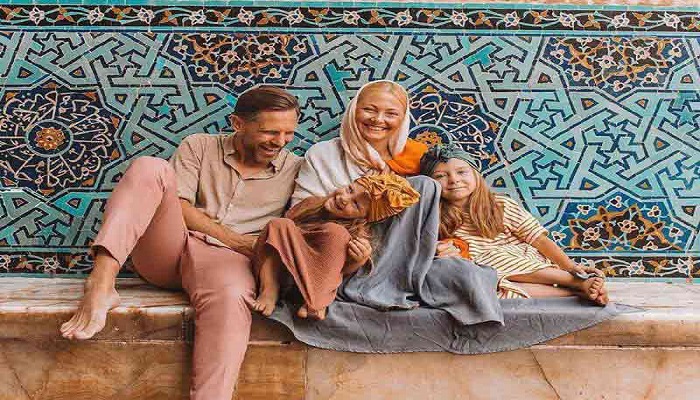
Unveiling the Nuances: A Deeper Look at Iran’s Dress Code
Understanding Iran’s dress code goes beyond a simple list of “do’s and don’ts.” Here’s a deeper dive into the cultural context and navigating potential gray areas:
Cultural Significance:
The dress code in Iran is more than just a set of rules; it’s rooted in religious beliefs and social norms. Respecting modesty is a way of expressing respect for oneself and others. Following the guidelines demonstrates your willingness to immerse yourself in the local culture and avoid causing unintentional offense.
Balancing Modesty and Personal Style:
While modesty is key, there’s still room for personal style. Women can choose clothing with interesting patterns, textures, and colors, as long as the overall silhouette remains loose-fitting and covers the required areas. Scarves can be a fun way to add a pop of color or express personal style. Men can opt for comfortable, long-sleeved shirts in breathable fabrics like cotton or linen.
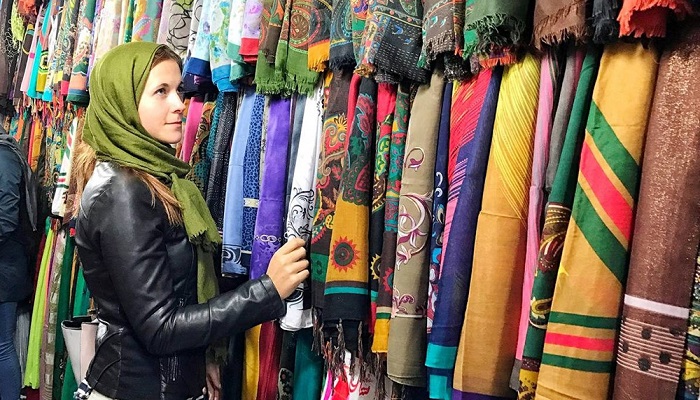
Headscarf Etiquette:
The headscarf, a symbol of modesty for women, requires a basic level of understanding for respectful wear. Here are some pointers:
- Simple Styles: opt for a plain scarf or one with minimal patterns. Avoid overly flashy or revealing styles.
- Securing the Scarf: There are various ways to tie a headscarf. A simple knot at the back of the neck is sufficient. You can find tutorials online for different tying methods.
- Hair Coverage: The hair should be mostly covered by the headscarf. A few loose strands around the face are acceptable.
Enforcement Variations:
Enforcement of the dress code can vary depending on location and circumstance. Larger cities like Tehran may be more relaxed, while rural areas or religious sites might have stricter expectations. It’s always best to be prepared and dress modestly, regardless of location.
Respectful Communication:
If you’re unsure about an outfit’s appropriateness, don’t hesitate to ask your hotel staff or a local guide for advice. A polite inquiry demonstrates your respect for the culture and your willingness to comply. Most locals appreciate visitors who make an effort to understand and follow local customs.
Beyond Clothing:
Dress code extends beyond just clothing. Maintaining a respectful demeanor in public spaces is also important. Avoid loud noises, public displays of affection, and overly revealing gestures. Following these general guidelines ensures a more culturally sensitive experience.
The Evolving Landscape:
Iran’s dress code, like its society, is constantly evolving. While the core principles of modesty remain, there’s a growing acceptance of diverse styles, particularly among younger generations. However, as a visitor, it’s always best to err on the side of caution and avoid pushing boundaries.
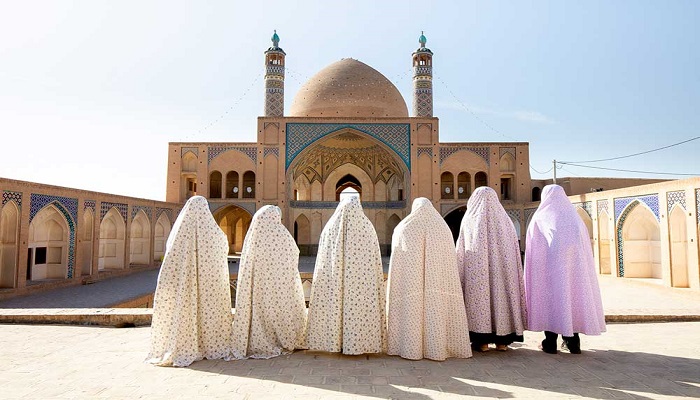
Embrace the Experience:
Viewing the dress code as a cultural experience can be enriching. Stepping outside your comfort zone and trying new styles can be a fun way to connect with the local way of life. You might even discover new clothing options you love!
By understanding the cultural significance, navigating potential variations, and embracing the experience, you can ensure your trip to Iran is both respectful and rewarding. Remember, a little cultural sensitivity goes a long way in creating a positive and memorable experience for yourself and those you encounter in Iran.
Absolutely! Here are some additional thoughts on Iran’s dress code:
- Focus on Comfort: Remember, you’ll likely be doing a lot of walking and exploring. Choose comfortable fabrics and styles that allow for breathability, especially during the warmer months.
- Embrace Local Shopping: Iran boasts a vibrant textile industry. Consider purchasing a scarf or a locally-made garment as a souvenir. This not only supports local businesses but also allows you to embrace the local style with confidence.
- Respectful Photography: When taking photographs of locals, especially women, always ask for permission first. Be mindful of their comfort level and avoid capturing images that might be considered disrespectful.
- Cultural Exchange: The dress code can be a great conversation starter with locals. Ask them politely about their cultural norms and traditions. You might be surprised by their openness and willingness to share their perspectives.
- A Bridge Between Cultures: Following the dress code is a small gesture that goes a long way in building bridges between cultures. It demonstrates your respect for their way of life and fosters a more positive and enriching travel experience for everyone involved.
I hope this comprehensive exploration of Iran’s dress code empowers you to pack appropriately, navigate cultural nuances with confidence, and ultimately, have a fantastic and culturally sensitive trip to Iran.
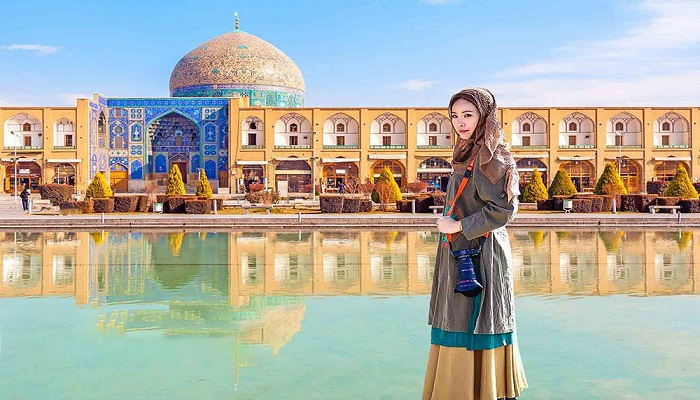
Conclusion: Unveiling Respect with Every Step
Iran’s dress code, while initially appearing as a set of guidelines, unlocks a deeper understanding of the country’s cultural fabric. By embracing modesty, you not only navigate public spaces with ease but also demonstrate respect for local customs and traditions.
A Rewarding Journey:
Following the dress code isn’t about restricting your individuality; it’s about embracing cultural exchange. It allows you to connect with the essence of Iranian life, fostering a more meaningful and enriching travel experience.
Remember, respectful behavior extends beyond attire. Maintaining a courteous demeanor in public spaces and being mindful of local customs ensures a positive interaction with the warm and welcoming people of Iran.
A Step Forward:
So, as you pack your bags for your Iranian adventure, remember to pack a sense of cultural sensitivity alongside your comfortable clothing. By following these suggestions and embracing the spirit of respect, you’ll be well on your way to unlocking the magic of Iran and creating lasting memories.



